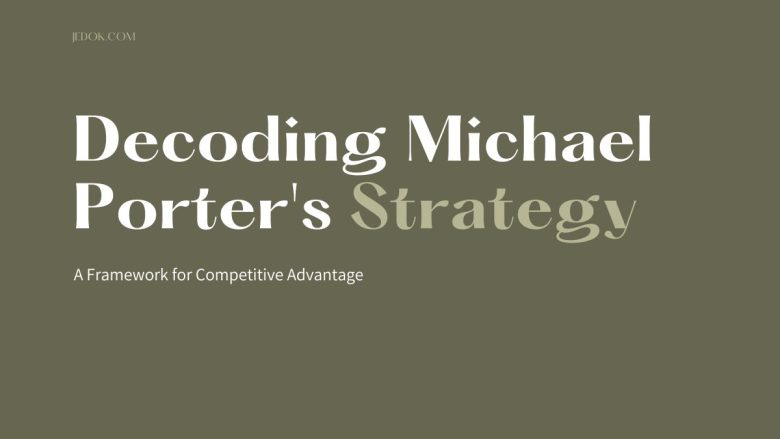
In the field of strategic management, few names carry as much weight as Michael Porter. Renowned for his groundbreaking research and frameworks, Porter has significantly influenced the way organizations approach strategy development and competitive advantage. In this blog post, we will explore the key concepts and principles of Michael Porter’s strategy framework, shedding light on how organizations can leverage his insights to achieve sustained success in today’s competitive business landscape.
Understanding Michael Porter’s Strategy Framework:
Michael Porter’s strategy framework centers around the concept of competitive advantage, which refers to an organization’s ability to outperform its competitors and create superior value for customers. Porter’s framework revolves around two fundamental strategies: cost leadership and differentiation. He argues that organizations must choose between these two approaches to gain a sustainable competitive advantage.
- Cost Leadership: Cost leadership involves achieving the lowest cost of production and operation in the industry, enabling organizations to offer products or services at a lower price than competitors. This strategy aims to attract price-sensitive customers and gain market share through economies of scale, efficient processes, and cost-control measures. By continuously driving down costs, organizations can maintain a competitive edge and potentially enjoy higher profit margins.
- Differentiation: Differentiation strategy focuses on creating unique and valuable offerings that distinguish an organization from its rivals. By providing products or services with distinct features, superior quality, innovative design, or exceptional customer service, organizations can attract customers who are willing to pay a premium. Differentiation strategy aims to build brand loyalty, create barriers to entry, and enhance customer perception of value, enabling organizations to command higher prices and achieve higher profitability.
Porter’s strategy framework also emphasizes the importance of selecting a specific target market or customer segment. Organizations should focus their resources and efforts on serving the needs and preferences of a well-defined group of customers rather than trying to appeal to all market segments.
Key Benefits of Porter’s Strategy Framework:
- Clear Focus: Porter’s framework provides organizations with a clear focus by guiding them to make deliberate choices regarding their competitive position. By selecting either a cost leadership or differentiation strategy, organizations can align their resources, capabilities, and activities to deliver superior value in a specific market segment. This clarity helps organizations prioritize their efforts and allocate resources more effectively.
- Sustainable Competitive Advantage: Porter’s strategy framework emphasizes the importance of building a sustainable competitive advantage. By committing to a clear strategy and aligning all aspects of the organization around it, organizations can create barriers to imitation and replication by competitors. This long-term advantage allows organizations to thrive in the marketplace and achieve superior financial performance.
- Improved Resource Allocation: Adopting Porter’s strategy framework enables organizations to make informed decisions about resource allocation. The framework encourages organizations to evaluate their value chain, identify areas where they can achieve cost leadership or differentiation, and invest resources accordingly. This disciplined approach helps organizations optimize resource allocation, streamline operations, and enhance overall efficiency.
- Enhanced Strategic Decision-Making: Porter’s framework provides a structured approach to strategic decision-making. It encourages organizations to assess industry dynamics, competitive forces, and market trends to inform their strategic choices. By systematically analyzing the industry value chain, competitive rivalry, supplier power, buyer power, and the threat of substitutes, organizations can make more informed decisions about their positioning and competitive strategies.
Conclusion:
Michael Porter’s strategy framework has become a cornerstone in the field of strategic management. By understanding the concepts of cost leadership, differentiation, and target market focus, organizations can navigate the complexities of the competitive landscape and achieve sustainable competitive advantage. Porter’s framework empowers organizations to make strategic choices, optimize resource allocation, and improve decision-making, ultimately leading to long-term success in an ever-changing business environment.



One Comment